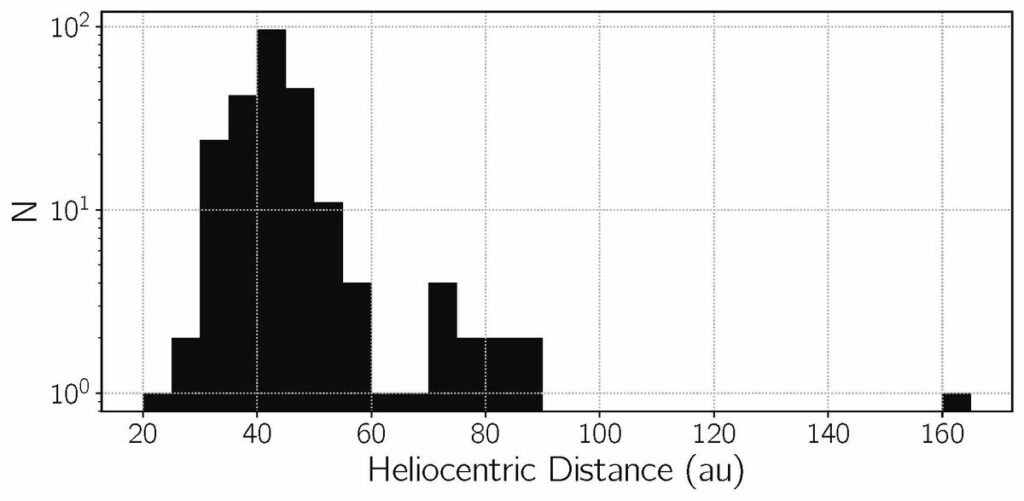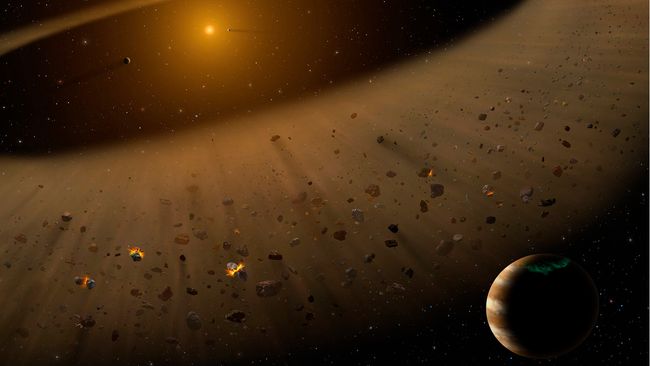Second Kuiper Belt? Our Solar System Could Be Vastly Larger Than Previously Thought
Eleven objects found at the extremities of the solar system could mark the location of a ‘Kuiper Belt 2.’
This celestial body was found by the Subaru telescope in collaboration with the New Horizons of NASA mission that is in the search of fresh targets for further study.
“If it can be confirmed, this will be quite a find,” Fumi Yoshida of the University of Occupational and Environmental Health Sciences and the Planetary Exploration Research Center at Chiba Institute of Technology said in a statement.
The 8-meter (26-foot) Subaru telescope on Mauna Kea in Hawaii has been New Horizons’ co-investigator since the spacecraft’s 2006 launch toward Pluto, which it encountered in 2015. Since then, New Horizons has been missioned in the Kuiper Belt, but generally, this is a zone containing icy comet-like formations located beyond Neptune’s orbit, at distances of 33 to 55 astronomical units (AU) from the sun. One AU is equivalent to astronomical unit which is the average distance of the Earth from the Sun and is approximately 149 million kilometers. Six million kilometers, or 93 million miles.
Subaru first started Kuiper Belt object searches in 2004 in an attempt to find targets which New Horizons could visit either at a closer distance or after the Pluto encounter. However at the time when New Horizons was being planned and when Pluto and the region of outer solar where New Horizons was aiming was in Sagittarius constellation with Milky Way core as the background, the Kuiper Belt objects were not easily distinguishable from the stars. There were only 24 Kuiper Belt objects known then, and all of them are too far to be targeted by New Horizons after it had steared away from Pluto. For instance, New Horizons, the spacecraft that flew by, and past Pluto and Charon in July 2015, and got closest to the Kuiper Belt object Arrokoth, during the New Year’s Day of 2019, had its Kuiper Belt object discovered by the Hubble Space Telescope.
Now Pluto and that part of the solar system are no longer close to the light of the Milky Way but located in a more representatives black background of sky. Since 2020, Subaru has found 239 of the Kuiper Belt’s objects using the Hyper Suprime-Cam (HSC). As with the other objects that have been identified, the majority of these are classified as Kuiper Belt objects but a few are rather exceptional.
“The most exciting discovery about the HSC is that it detected 11 objects outside the Kuiper Belt,” added Yoshida.
This newly found population of bodies is not just a continuation of the Kuiper belt. First of all some distances between 55 and 70 AU are still unoccupied, secondly it is possible to distinguish the second belt that is sometimes called “Kuiper Belt 2” and it is located between 70 and 90 AU, it could stretch up to 13. Five billion kilometers or 8. 4 billion miles away from the sun The sun has significant impact to the earth in many ways as showed above. To put it into perspective, Neptune is at 30 AU and New Horizons is currently at 60 AU from the Sun while the NASA Voyager 1 and Voyager 2 are at 164. 7 and 137. Now, the spacecraft is located 7 and 6 astronomical units from the sun respectively, both are lost in the interstellar medium.

Solar system architecture as a whole, including the position of the asteroid belt and the Kuiper Belt in the system, is defined by the processes of planetary formation, movement of, for example, young Jupiter in the system, which sends smaller objects fly in different directions.
‘The identification of the distant celestial bodies and knowledge on distribution of their orbits play an important role in exploring the history of formation of the solar system, its comparison with the exoplanetary systems and general understanding of planet formation in the universe’, said Yoshida.
Nothing a bit catastrophic such as this new population of bodies wasn’t entirely unexpected on the part of government. New Horizons’ Student Dust Counter instrument is still measuring dust particle impacts despite the fact that the rate should be depauperate as New Horizons traverses the outer solar system past the Kuiper Belt. The presence of dust implies that something is continuously creating dust and given the fact that the amount of dust which has settled has not changed, then objects creating dust must be situated further out. Also, New Horizons has detected puzzling events known as stellar occultations when an object passes in front of a star and momentarily dims its light suggesting the existence of this newly discovered distant Kuiper Belt 2.
However,, other observations of protoplanetary disks around other stars in different configurations such as observations by ALMA in Chile shows that systems have extended regions possessing many belts and gaps farther than the Kuiper belt found in our system.
;‘Our solar system’s Kuiper Belt appeared remarkably underpopulated compared to those in other planetary systems,’ said Wes Fraser of the National Research Council of Canada, who led the research that led to these discoveries. Rather, If confirmed, the small, obscure Kuiper Belt may not be ours alone. ”
Earlier, when more objects in the Kuiper Belt were discovered to be much smaller than previously supposed, the hypothesis was that the solar nebula from which the planetary system formed was comparatively small as well. But, the hints of the existence of this “Kuiper Belt 2” speaks otherwise.
”For the latter, it is relevant to stress that the original solar nebula was much larger than researchers used to think, which will likely influence the investigation of the planet formation process within the solar system,” said Yoshida.
Astronomers will go on using Subaru for purposes of identifying the orbits of the 11 objects in this new belt being created. Because such objects were discovered in one limited region of space, it can be assumed that these nine are only the few objects of a much larger population. This adds to the explore list that the beyond outer limits of the solar system has a lots to offer, maybe more dwarf planets or Planet Nine.
These are exciting words that indicate that researchers have established something unique and revolutionary in the far-off solar system, according to Alan Stern, head of the New Horizons project. :When one makes such a discovery such as this one s/he definitely will agree that it could not have been possible without the expertise of the Subaru Observatory which is among the best in the world.
The findings are set to be published in the Planetary Science Journal, and are currently available as a preprint.
Do not forget to share your opinion with us to provide you with the best posts !




0 Comments